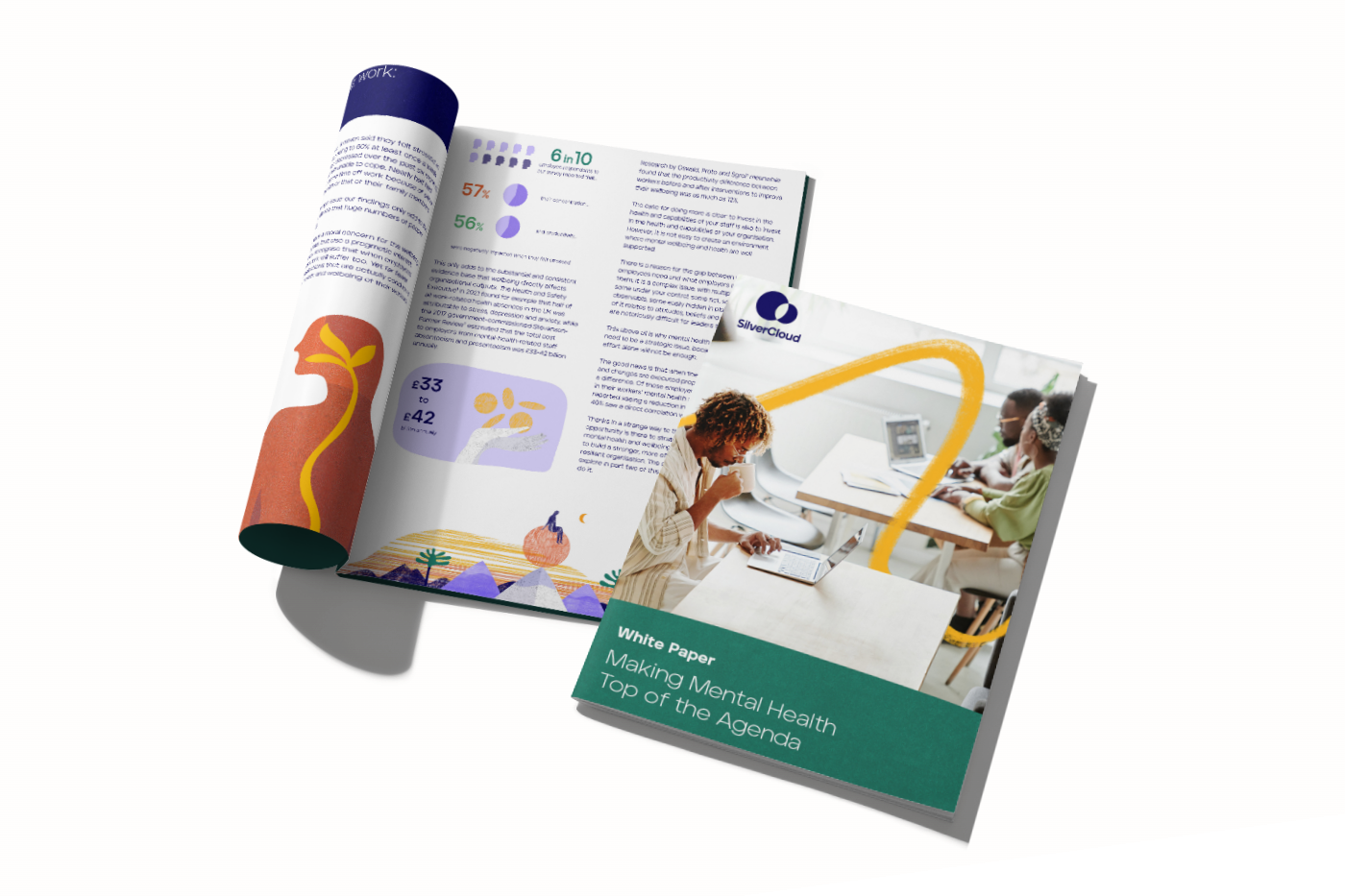
The term “productivity” is a boardroom buzzword on the lips of managers and business owners all across the globe. However, this mindset often results in employees feeling obligated to demonstrate productivity at the expense of their job satisfaction and, in some cases, their mental health. With the unique pressures of the COVID-19 pandemic and blurred work-life boundaries, there has been an employee mental health crisis that’s been proliferating across teams everywhere.
The Importance of Taking Care of Your Mental Health and Wellbeing in the Workplace
Since the beginning of the pandemic, workloads have increased, work-life boundaries have blurred, and conflicts between navigating priorities have intensified. While a certain amount of stress is natural throughout our lifetime, experiencing high levels of burnout and stress for a sustained period of time is counterproductive to work and health.
Achieving productivity goals, completing projects on time, accomplishing financial gains – these are only some of the means by which employers measure their teams’ overall success. As such, employees are key to reaching such achievements, and the importance of providing mental health support at work can’t be ignored in the pursuit of success.
Maintaining a positive mental health state at work is imperative because it helps you better cope with and manage stress, collaborate with others, remain agile, boost resilience, and flourish in your role overall. As such, raising awareness and fostering dialogue surrounding mental health is crucial. But sheer communication isn’t always enough on its own. Even though organizations are increasingly recognising the value of supporting mental health in the workplace, employees are still struggling. According to a SilverCloud survey, one in seven employees expressed a reality of feeling stressed at work every day and even further rising to 60% at least once a week.

Three Ways Employees Can Improve Their Mental Health At Work
Encouraging and supportive employers are key to a productive work environment, but mutually beneficial relationships often require give and take. No matter the type of work environment you’re in, there are effective ways to protect yourself from burnout, achieve a greater state of wellbeing, and find a balance between mental health and professional performance.
Create and Set Boundaries Surrounding Your Connectedness
As technology continues to blur the lines between work and home life, employees are essentially reachable around the clock. Feeling as though employers expect you to be available after hours via instant messaging or email can cause anxiety, stress, and emotional strain. Nonstop connectedness makes it extremely challenging to completely relax and recharge. Device-free downtime and being isolated from job demands is imperative for maintaining focus and engagement at work.
If the thought of implementing device-free downtown causes feelings of stress or anxiety, it’s perfectly okay to take baby steps. Setting a boundary with employers and colleagues that you will not be available to message or return emails between certain hours throughout the week. Designating phone-free zones in your house can also be extremely helpful while working towards creating a more harmonious work-life balance between your personal and professional life.
Optimise Your Schedule and Work to Timebox Throughout the Day
Throughout work environments, employees are racing from one deadline to another, which can begin to feel debilitating over time. While you may not be able to control all of your deadlines, there are opportunities to optimize your work schedule to more effectively utilize your time and energy.
It’s a fact that everyone’s attention span and energy wanes over the day, so scheduling your most demanding and creative tasks in the morning can help to set you up for a more optimal and productive work day. Even further, research shows that taking breaks throughout the day can boost your performance.
Another tactic you can implement is timeboxing. Timeboxing is a time management technique that you can use to separate your day into digestible “boxes” of time. By cutting your time into boxes and associating each box with a task, you’re working towards becoming more efficient and taking control of your tasks.
Aim to Strengthen Your Ability to Cope with Uncertainty
It’s natural to experience feelings of worry about your job security and stability. Lack of control, in any form, often can set someone up for burnout. That's why, aside from candidly and openly speaking with employers, it’s imperative to make an effort to strengthen your capacity to cope with uncertainty. Often, our minds tend to focus on the negative, so taking time to notice and bask in the positive moments is a solid first step. Noticing the positive occurrences throughout the day can pull your attention away from feelings of helplessness and offer a sense of mastery over your mind.
By routinely setting aside time to feel sensations of joy and satisfaction in your mind and body, you can work to strengthen pathways for resilience in your brain. That said, burnout still has the ability to creep up on you, despite your efforts to seek positivity and hopefulness. Upon noticing the first signs of stress, it’s imperative to take appropriate measures without delay.
Looking after your mental and physical health is not a luxury; it is an essential part of maintaining your energy levels and protecting yourself against stress.

When to Seek Professional Support for Improving Your Mental Health at Work
The massive societal shifts of the past few years have left many employees feeling stressed and vulnerable. By embracing the strategies above, you’ll be taking a proactive approach toward improving your mental health at work and paving the way for those around you to do the same. Keep in mind that attempting to perfect everything at once will likely lead to more frustration. It’s important to pick up one to two areas to practice at a time.
Everyone has their own unique strengths, weaknesses, personalities, and circumstances that will impact what they need. Upon dealing with workplace stress and anxiety, professional support can prove to be extremely helpful. When you want to seek mental health support at work but haven’t found it possible to implement effective changes on your own, there are professional and evidence-based solutions that can help.
SilverCloud online platform offers collaborative mental health programmes and tools for employees experiencing mental health challenges in the workplace. Learn more about how SilverCloud can help you improve your mental health and wellbeing at work.








